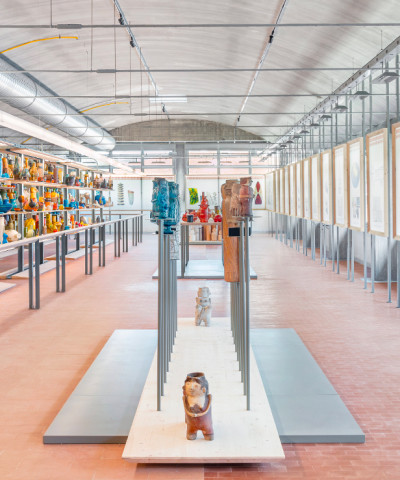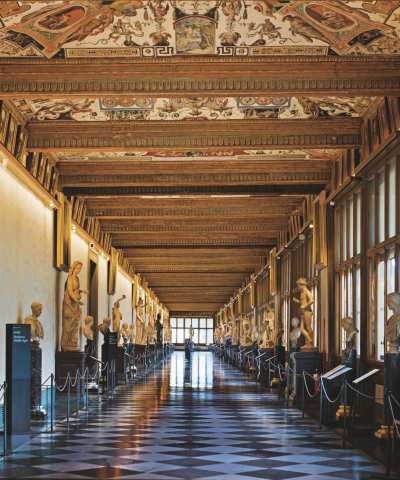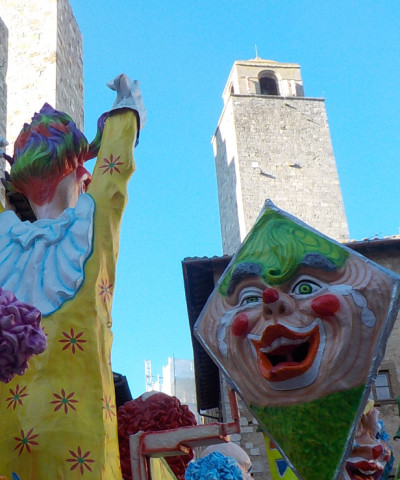Anghiari: what to see, where to eat and sleep
Discovering one of the most beautiful medieval villages in Tuscany
Located in the easternmost part of the Tiber Valley of Tuscany, about an hour and a half from Florence and just thirty kilometres from Arezzo, Anghiari has a beautiful historical centre surrounded by imposing thirteenth-century walls fortified with defensive battlements, moats and thick barricades. Along their perimeter there are three gates: Porta San Martino, also known as “Porta del Fosso” because in ancient times it was equipped with a drawbridge that allowed to cross one of the underlying moats, Porta Sant’Angelo which was the main entrance to the town, and Porta Fiorentina or “Porta Nuova” which was built to connect the oldest part of the town with Piazza Baldaccio.
The village develops along the ancient via di Ronda (Corso Matteotti), the steep and characteristic fourteenth-century road, better known by the names of “Ruga di San Martino” or “La Croce” because at the top of the road stands the Church of the Cross dedicated to St. Francis. Via di Ronda is a classic route for visitors who want to admire from bottom to top the walls north of Anghiari and the panoramic view of the Upper Tiber Valley.
The area was the scene of the famous Battle of Anghiari, fought on 29 June 1440 and won by Florentine troops against those of the Duchy of Milan. In 1503, to celebrate the victory of the Florentine Republic, Gonfaloniere Pier Soderini commissioned Leonardo da Vinci to paint some of the symbolic scenes of the Battle on a wall of the Salone dei Cinquecento into Palazzo Vecchio in Florence. The fresco, however, was soon lost during its drying process.
Anghiari is part of the Association of The most beautiful villages in Italy and has received the 2021 Orange Flag from the Italian Touring Club, an award that every three years honours small inland municipalities for their tourist and environmental qualities.
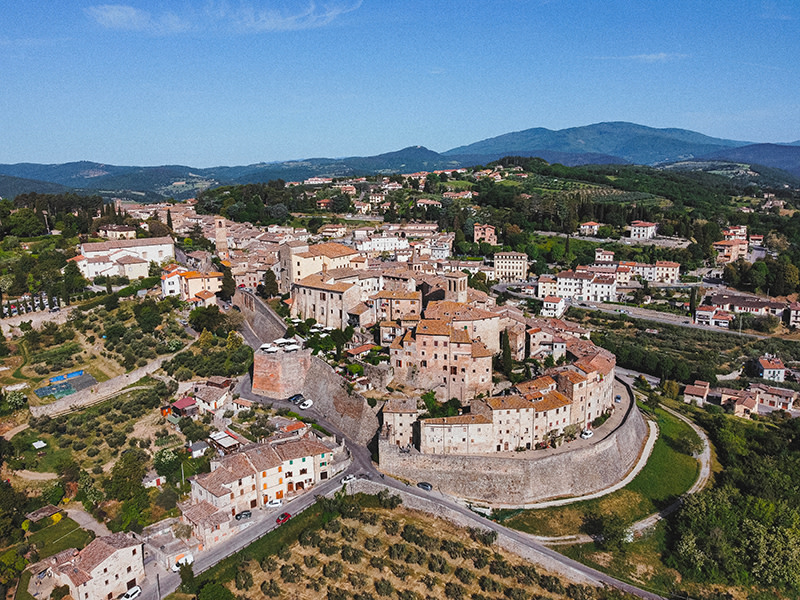 Anghiari (ph. Stefano Casati)
Anghiari (ph. Stefano Casati)WHAT TO SEE IN ANGHIARI:
Museum of the Battle and Anghiari
Piazza Goffredo Mameli, 1-2
Housed in the sixteenth-century Palazzo del Marzocco, so called for the Florentine Marzocco, a lion statue erected in the corner, the Anghiari History Museum displays some of the most important collections in the area, ranging from Prehistory to Roman antiquity, from the collection of ancient firearms to local eighteenth-century ceramics. Ample space is dedicated to the digitised collection of what remains of Leonardo’s drawings concerning the battle.
State Museum of Palazzo Taglieschi
Piazza Mameli, s.n.c.
A few steps from Palazzo del Marzocco, you cannot miss a visit to Palazzo Taglieschi, the Renaissance seat of the State Museum of Arts and Folk Traditions of the Upper Tiber Valley, where you can admire, for example, the wooden statue of the Madonna con Bambino (1419-1425) by Jacopo della Quercia.
Natural Reserve of Monti Rognosi
Monti Rognosi Park or “Parco delle Pietre Verdi”, located in the north-west of Anghiari, is part of the Natural Reserve of Monti Rognosi and the Sovara Valley; it occupies about 1,500 hectares and it is one of the most evocative natural areas of the Tiber Valley of Tuscany. Monti Rognosi, with their geological composition of ophiolites, dark green and black magmatic rocks that resemble the reptiles’ skin, offer not only some unique wildlife landscapes but also a rich history linked to the local mines, today enhanced by the proposal of events, workshops and thematic exhibitions.
Sanctuary of the Madonna del Carmine
The Sanctuary of the Madonna del Carmine, located in Combarbio of Anghiari, was built between 1536 and 1552 after an apparition of the Virgin Mary to a local shepherdess. The religious complex includes a charming Latin cross-shaped church, the ancient convent of the Carmelites, a characteristic bell tower and a lovely cloister. Every year, in July, in conjunction with the Marian apparition, the Feast of the Assumption is held, during which masses and processions are celebrated and banquets with local delicacies are organised.
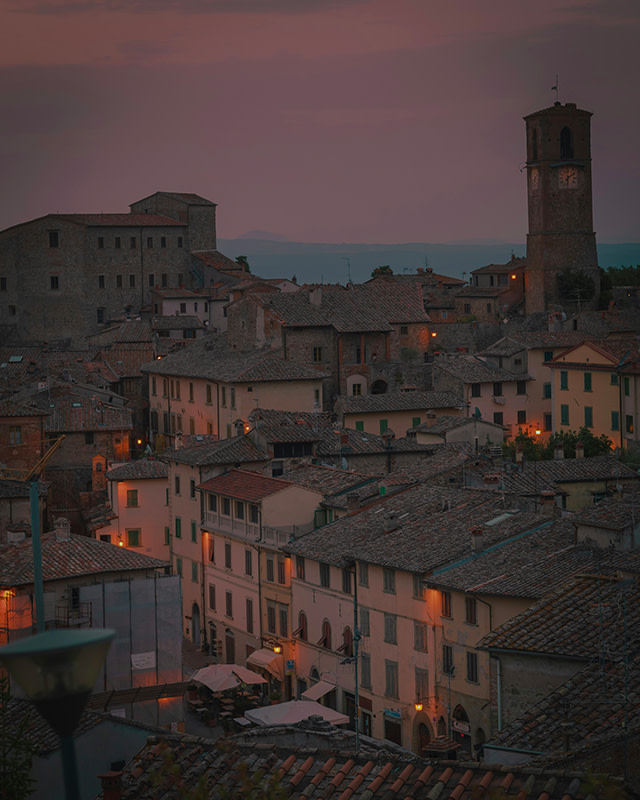 Anghiari (ph. Lewis Patrick)
Anghiari (ph. Lewis Patrick)WHAT TO VISIT AROUND ANGHIARI:
Montecasale Hermitage (Sansepolcro)
Set in the greenery Tuscan Apennines, on a hill above Sansepolcro, in the Upper Tiber Valley and on the border between Tuscany and Umbria, the Montecasale Hermitage, founded in 1213 by Francis of Assisi, houses precious works of Franciscan art, including a sculpture of the Madonna col Bambino and some relics of the three converted thieves. Outside, you have to visit Fonte di San Francesco, Sasso Spicco and the garden linked to the deeds of the Saint.
Birthplace of Piero della Francesca
Via Niccolò Aggiunti, 71 (Sansepolcro)
The home of Piero della Francesca, now residence of the homonymous Foundation, preserves and celebrates the genius of the fifteenth-century Italian artist. With the aid of advanced multimedia tools, the Civic Museum of Sansepolcro (via Aggiunti, 65) offers a full immersion in the life, works and thought of the Renaissance painter, reopening to the public permanently and by appointment: every day from 10am/1pm - 2.30pm/6pm excluding the Christmas Day and the New Year's Day.
Musei Civici Madonna del Parto
Via della Reglia, 1 (Monterchi AR)
ph. +39 0575 70713
Not to be missed is Piero della Francesca's La Madonna del Parto in Monterchi, one of the highest expressions of the Renaissance. It is in a small museum set up just for her in an old country schoolhouse, among the rolling hills of Arezzo. Through the windows, landscapes that look like paintings open up.
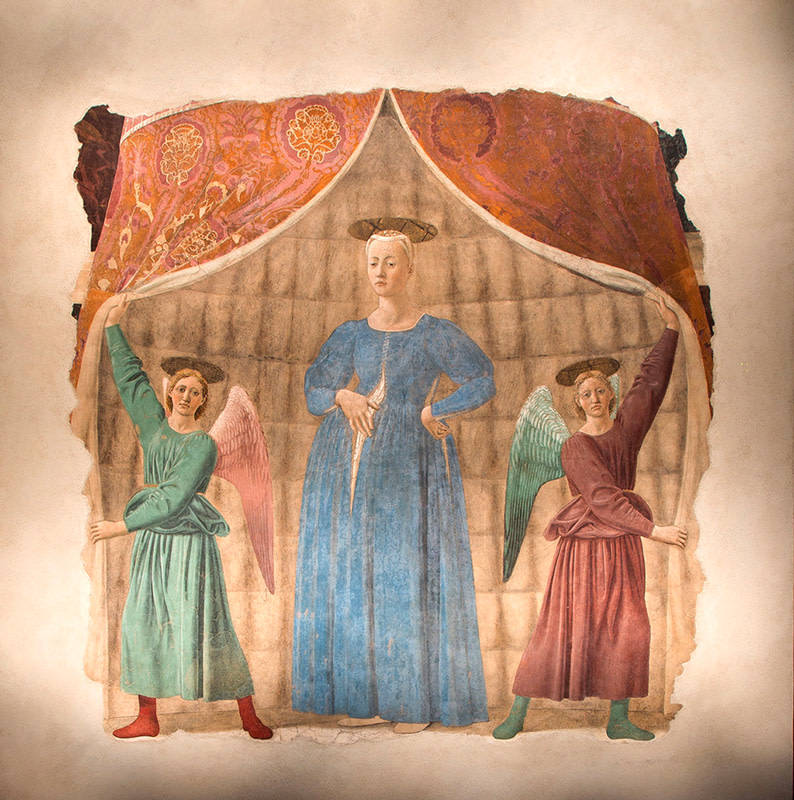 LA MADONNA DEL PARTO
LA MADONNA DEL PARTOQuarata
Just four kilometres from Arezzo there is Quarata, a small medieval village of Roman origin that dominates the surrounding plain from the top of a cliff. It is a destination rich in historical tradition that you should not miss. It is said, in fact, that its abbey castle, a former Benedictine monastery dating back to the tenth century, hosted Pope Gregory X in 1275 during his return journey from Lyons to Rome due to his precarious health conditions. But not only: Leonardo da Vinci would also have stayed in Quarata. The discovery dates back to the early 1990s, when the historian and art critic Carlo Starnazzi recognised the setting of Ponte Buriano in the background of the Mona Lisa.
Arezzo
Located in the middle of the four valleys (Valtiberina, Valdichiana, Casentino and Valdarno), Arezzo is one of the ideal destinations to explore south-eastern Tuscany. Divided into two parts, the historic one on a hill and the one below full of clubs and shops, the city offers a fascinating mix of history and modernity: its squares and churches, such as Piazza Grande and the Basilica of San Francesco, preserve the masterpieces of illustrious names in the literary, artistic and architectural fields and it is, moreover, the birthplace of Petrarch, Piero della Francesca and Giorgio Vasari, just to name a few. Although it was devastated during the Second World War, Arezzo is also famous for its cinematographic itinerary: Leonardo Pieraccioni's comedy “Un fantastico via vai” and Roberto Benigni's masterpiece “La vita è bella” were filmed in Arezzo's historical centre.
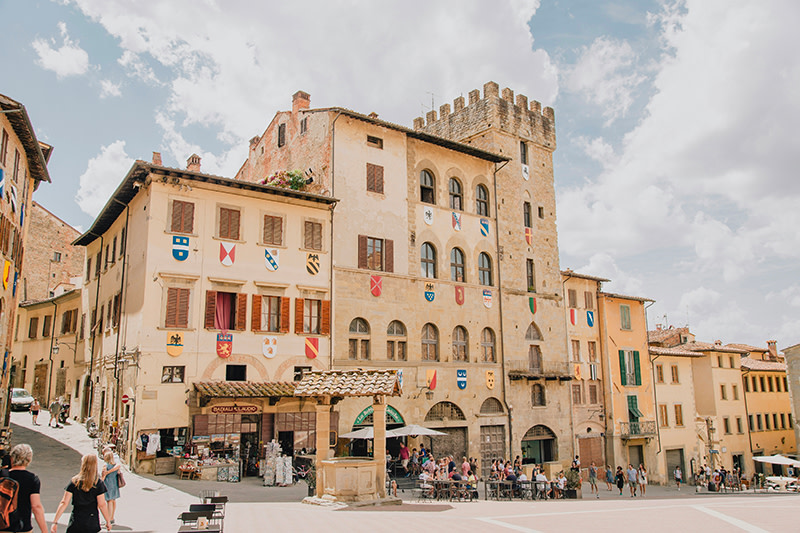 Arezzo (ph. Alexander Henke)
Arezzo (ph. Alexander Henke)WHERE TO EAT IN ANGHIARI:
Octavin
Scalinata Camillo Berneri, 2 (Arezzo)
ph. +39 0575 343521
Few places and a warm and intimate atmosphere, this is Octavin, a 1 Michelin star restaurant in Arezzo. Chef Luca Fracassi focuses on enhancing the typicality of the area by adding a touch of internationality and great attention to the quality of the products. A well-thought-out mix of gluttony and culinary contemporaneity, without ever overdoing it.
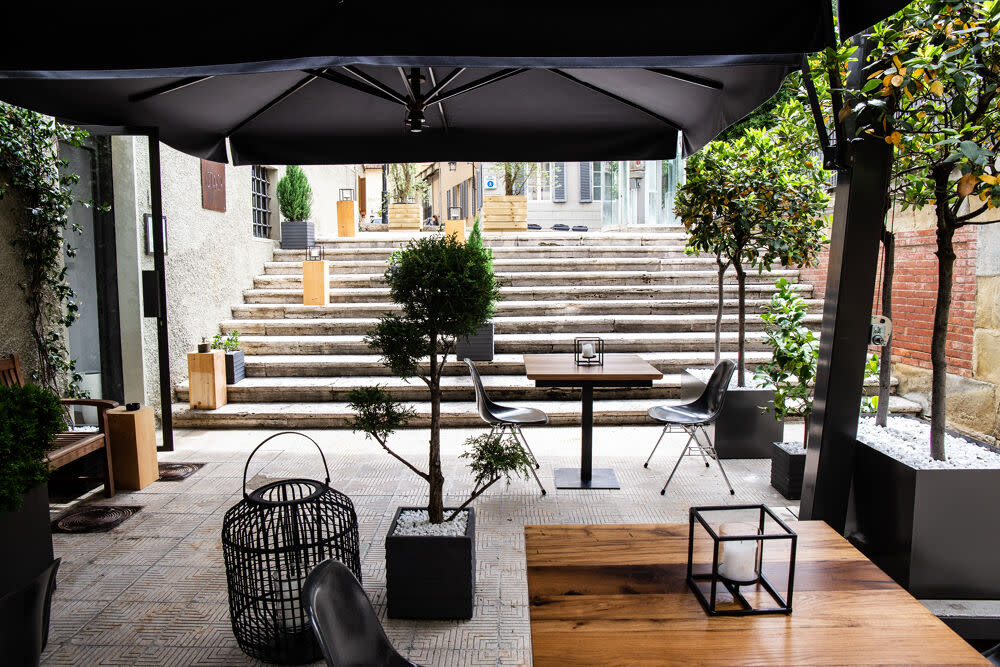 Octavin Arezzo
Octavin ArezzoLa Cantina del Granduca
Piazza Mameli, 13
ph. +39 0575 788275
Just a few steps from the Museum of the Battle and Piazza Garibaldi, La Cantina del Granduca is a small and typical restaurant in Anghiari where you can taste typical Anghiari dishes accompanied by an extensive list of local and national wines.
Vecchia Osteria la Pergola
Tavernelle di Anghiari
ph. +39 0575 723330
A traditional tavern in the “Land of Arezzo” with a large stone fireplace for the harshest winter, and a welcoming courtyard garden sheltered from the hot summer sun. Madama Doretta's tavern offers its diners typical local dishes ranging from handmade ravioli to tagliolini with duck in white sauce, from game and farmed meat - both zero-kilometre - to desserts (cantucci, panforti, tarts, cavallucci...) made by the “Cinzia's pastry shop”.
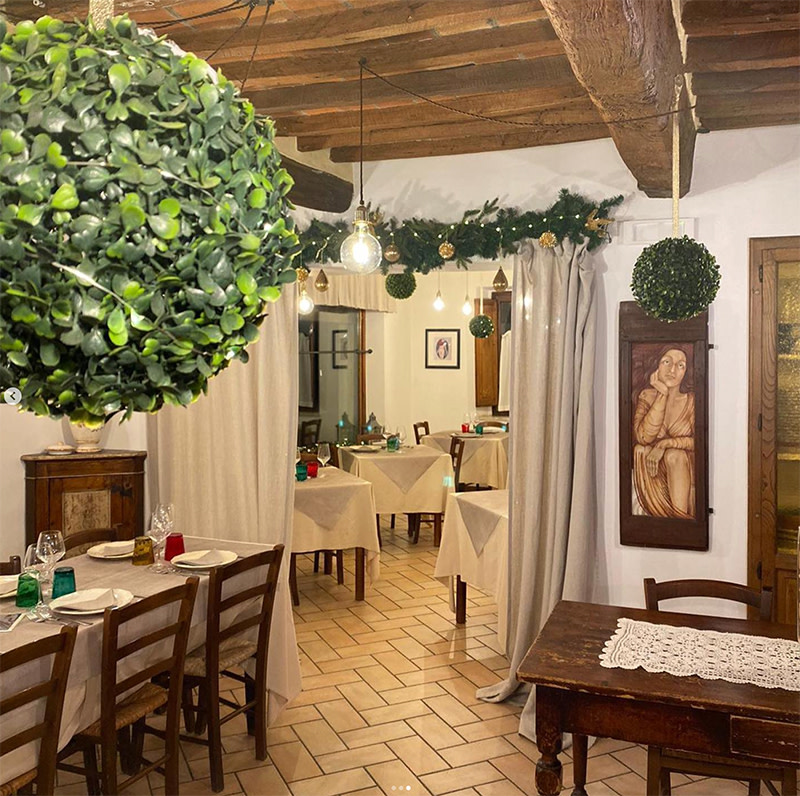 Vecchia Osteria la Pergola
Vecchia Osteria la Pergola Da Alighiero
Via Giuseppe Garibaldi, 8
ph. +39 0575 788040
In Anghiari there is Da Alighiero, the restaurant selected by the MICHELIN Guide 2022, famous for its first courses, including bringoli anghiaresi (spaghettoni handmade with flour and water) with porcini or ragù, and for its characteristic meats such as Tuscan tripe in spicy red sauce or pan-fried liver with sage and white wine.
Davide Del Gaia’s Winery
Via San Lorenzo, 47
ph. +39 349 832 2954
Davide Del Gaia's Winery is located in the heart of the Tiber Valley of Tuscany. Active since the 1970s, the family-run winery owns three wine labels produced entirely in the village of Anghiari: the two red wines Podere Volterrena (Sangiovese) and Milton (Merlot), and the white one Roncione. In the company it is also possible to have a guided wine tasting.
ANNUAL APPOINTMENTS IN ANGHIARI:
Mostra Mercato dell’Artigianato of the Tiber Valley of Tuscany
Now in its 49th edition, the Anghiari Arte Artigianato has become a true institution capable of attracting numerous visitors from all over Italy every year, between the end of April and the beginning of May. It is a travelling exhibition, an evocative walk through the alleys and small squares of Anghiari, where visitors can admire the wood and leather, wrought iron or ceramic products made by the best craft workshops in Tuscany.
The Palio of Victory
At sunset every 29 June since 1441, Anghiari celebrates the victory of the Florentine troops over the Milanese ones. In 1827, the traditional Palio of Victory, suppressed due to the death of a jockey, was replaced by a foot race of 1440 metres on the ancient and very long sloping road known as “La Croce” that, straight as a sword, connects Anghiari to the neighbouring town of Sansepolcro. Starting from the chapel of the Maestà di Santa Maria alla Vittoria - the historic site of the battle - the competition ends at the market square (today Piazza Baldaccio) with the presentation of the Palio to the winner.
Anghiari Festival
Every July, the notes of classical music spread through the squares and alleys of Anghiari. For a whole week, the town hosts the Southbank Sinfonia of London, a chamber orchestra of young graduate musicians from all over the world, founded in 2002 by the internationally renowned composer Simon Over, who is also the artistic director of the festival. Many of these concerts are free admission.
The Intrepida
Since 2012, for three days starting on the third Sunday in October, the Intrepida, a non-competitive cycling race that takes place on three different routes (a short one of 42 kilometres, a long one of 85 kilometres, and the most intrepid one of 120 kilometres), has been held on the streets of Anghiari. In order to participate, all cyclists must have a road racing bike built before 1987 and dress appropriately.
WHERE TO SLEEP IN ANGHIARI AND IN ITS SURROUNDINGS:
Il Borro Relais & Châteaux
Località Borro, 1 (Loro Ciuffenna, AR)
ph. +39 055 977053
Carved out of a medieval hamlet in the Tuscan countryside, Borro Relais & Châteaux is a hotel and organic farm and winery owned by Ferruccio Ferragamo since 1993. To stay, guests can choose the Dimora Storica, Villa Casetta, Villa Mulino or suites between the Borro's hamlet and the Aie del Borro. In addition to the panoramic swimming pool and spa, Borrobar is the ideal place to indulge in any time of the day. You live in contact with nature, including horseback riding, nature trails on foot or by bike. Highlights include tastings of the great wines from the Il Borro winery and chef Andrea Campani's cuisine at Il Borro Tuscan Bistro based on zero-mile raw ingredients from the organic garden.
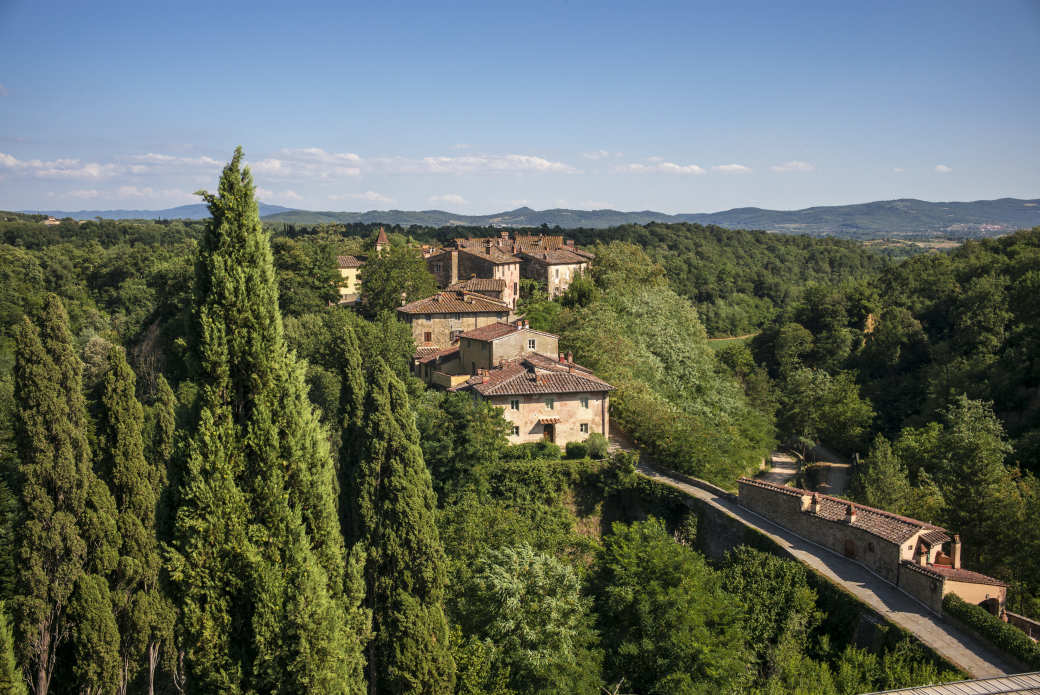 Il Borro Medieval Village
Il Borro Medieval VillageRelais & Chateaux Il Falconiere & Spa
Località S. Martino Bocena, 370 (Cortona, AR)
ph. +39 0575 612679
Love for the land, for ancient traditions, inspired and guided the dream of the young Baracchi couple, who in 1989 breathed new life into the old family farm, transforming it into an elegant wine resort in the heart of Tuscany. The philosophy of Il Falconiere is encapsulated in the choice of a name that told of hunting and smelled of antiquity: a unique place where to spend precious moments for the soul, among sounds and fragrances of a sunny land. A Wine Resort with authentic charm: 31 rooms and suites, a Michelin-starred restaurant, two outdoor pools and an exclusive SPA.
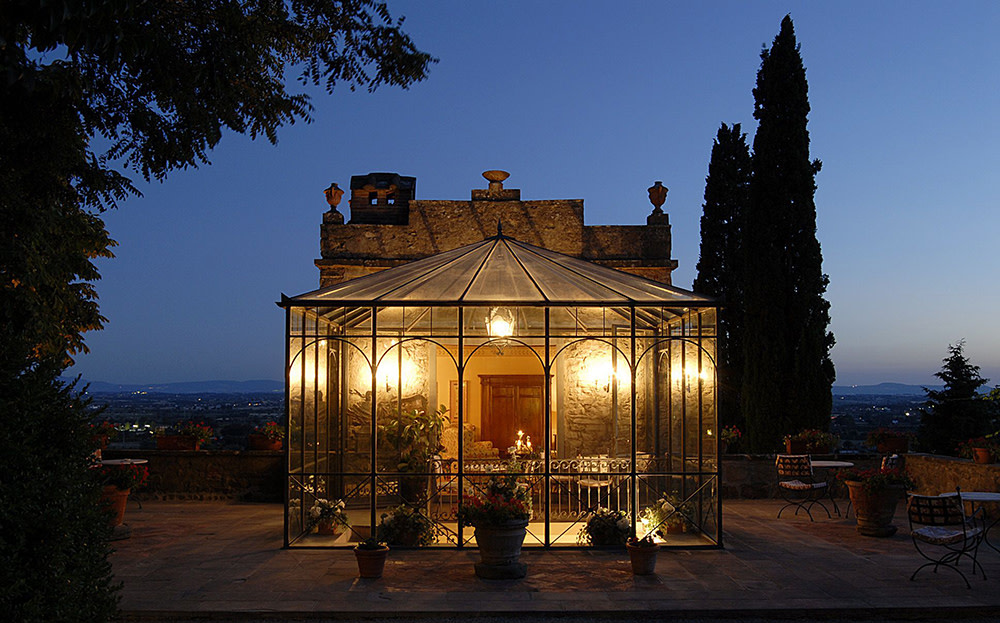 RELAIS & CHATEAUX IL FALCONIERE & SPA
RELAIS & CHATEAUX IL FALCONIERE & SPAThe Cardo Resort
Locality La Palaia, 108
ph. +39 339 68 41 441
Set in the unspoilt hills of Tuscany and Umbria, and two kilometres from the medieval village of Anghiari, The Cardo Resort is a charming 4-star bed & breakfast. On site, you can choose to entertain yourself by practising sport activities (fly fishing, yoga and pilates, hiking or biking, including horseback riding or enduro motorbike), or relax with wellness treatments by taking advantage of the various accommodation options, including luxurious rooms with four-poster beds, suites with exposed-beam ceilings and Jacuzzi, and four apartments designed to meet your every need.
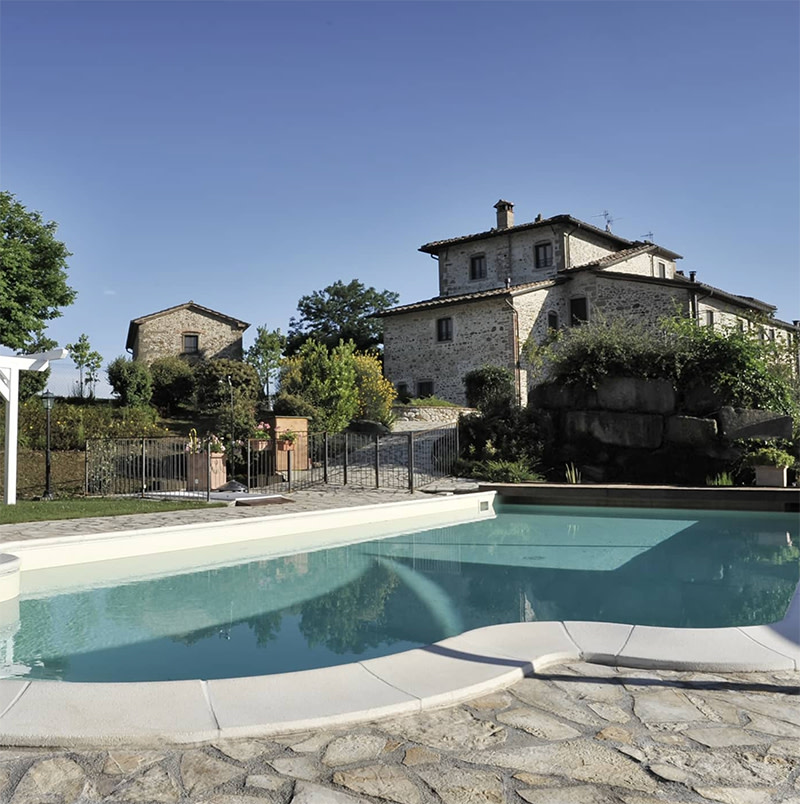 Il Cardo Resort
Il Cardo Resort Borgo Palace Hotel
Via Senese Aretina, 80 (Sansepolcro)
ph. +39 0575 736050
Close to the exit of the E45 highway and less than a kilometre walk from the centre of Sansepolcro is located the 4-star Borgo Palace Hotel. The single, double and king-size bedrooms, with orange and apricot-coloured walls, are furnished in classical style, while the junior suite and suite offer an elegant living area with fine wooden furniture, upholstered chairs and a dining table. The Borghetto Luxury Restaurant is a gastronomic excellence in which tradition and innovation come together to create unique dishes in accordance with the seasonal quality of local products.
Tiferno Hotel
Piazza Raffaello Sanzio, 13 (Città di Castello)
ph. +39 0758 550331
On the border with Tuscany, on the square in the historic centre of Città di Castello, a former monastery dating back to the seventeenth century has housed Hotel Tiferno, one of the oldest in Umbria, since 1895. Just 150 metres away there is Palazzo Albizzini, home to the Burri Museum, where 130 works by Alberto Burri are exhibited, and the Hotel Tiferno, not surprisingly, offers its guests an immersion in the world of art; the walls of its common areas on the ground floor are, in fact, adorned with 33 original graphics made by the painter. Among the luxury services the hotel offers there are: a wellness centre with sauna, Turkish bath and massage sessions by appointment, a library, a meeting-conference room ready to accommodate up to 50 participants and, for those who wish to keep fit, a gym equipped with top-of-the-range fitness equipment.
The Portici Hotel - Historical Residence
Via Roma, 18 (Arezzo)
ph. +39 0575 299901
The Portici Hotel, in the heart of Arezzo and close to a restricted traffic area, is located on the fourth floor with the lift of a period building, next to the city's characteristic arcades. The unique rooms are furnished in Renaissance style; two of the available suites are equipped with a Jacuzzi, while the double rooms have windows and small balconies with panoramic views.
HOW TO GET TO ANGHIARI FROM FLORENCE:
By car, take the A1 motorway to Arezzo and, once you reach the chief town, proceed along the SP 43 Passo della Libbia road, where you can park your vehicle. The parking area for cars and campers is located just below the walls of the village of Anghiari and has a free lift that is very useful for reaching the historic centre.
By train, you travel with Trenitalia from the Firenze Santa Maria Novella station to Arezzo; from the Aretine Terminal station (via Marconi), you resume the journey with the bus line SI381 that, in forty minutes, takes you to your destination.










